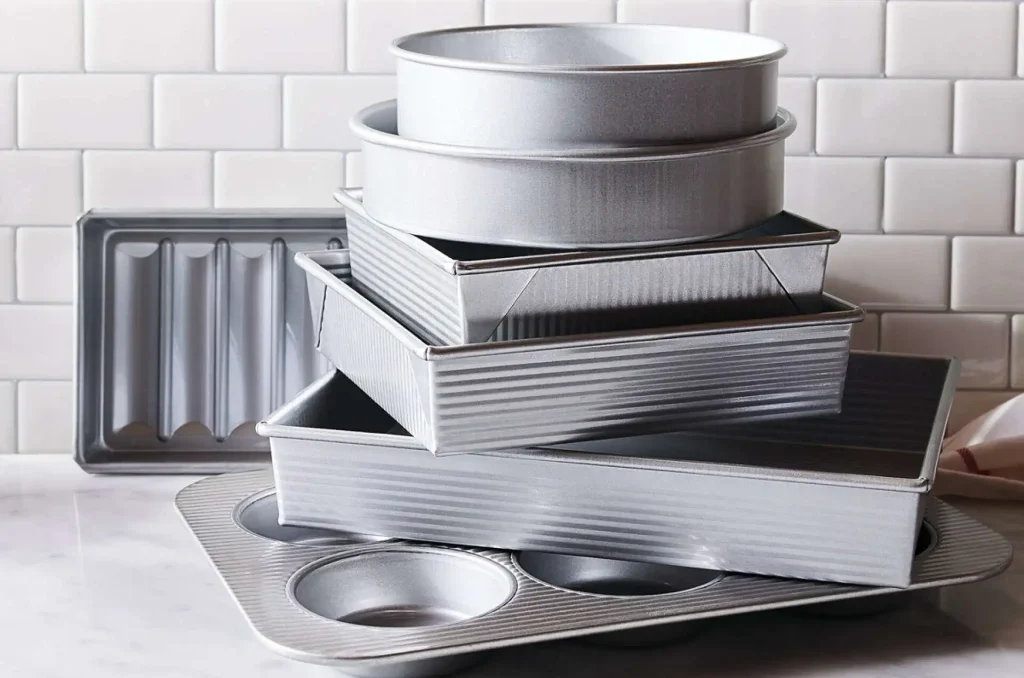Aluminum baking pan are commonly seen in commercial kitchens or family kitchens. In this article, we will explore the qualities of aluminum baking pans to provide a thorough understanding of their benefits, drawbacks. After reading this article, you’re sure to choose the most suitable pan for yourself.
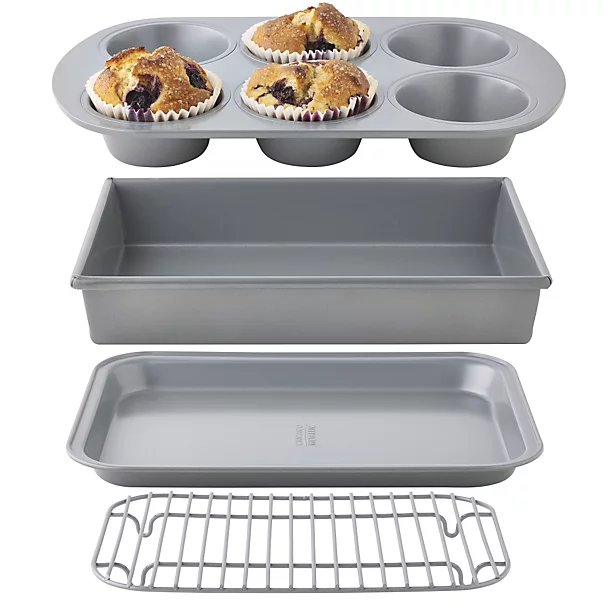
Is aluminum pan good for baking?
Aluminum baking pans account for a large share of the market and are a common material used for cookware. However, specific market share figures may vary by region and market demand. In some budget markets or price-sensitive regions, aluminum baking pans are usually the most common and affordable option. Aluminum baking pans are relatively inexpensive to manufacture, and as a result, sales of aluminum pans are typically higher in these markets. Similarly, aluminum baking pans are a common choice in the restaurant and commercial kitchen sector. Aluminum baking pans have good heat conductivity and are lightweight, making them suitable for high-temperature, rapid cooking and large-scale cooking tasks.
Aluminum baking pans are also popular in everyday life. It is also because aluminum baking pans are relatively inexpensive, lightweight and easy to handle. The thermal conductivity of aluminum baking pans is also loved by many; thinner aluminum pans conduct heat faster, while aluminum pans with the right thickness can provide even heating to meet different cooking needs.
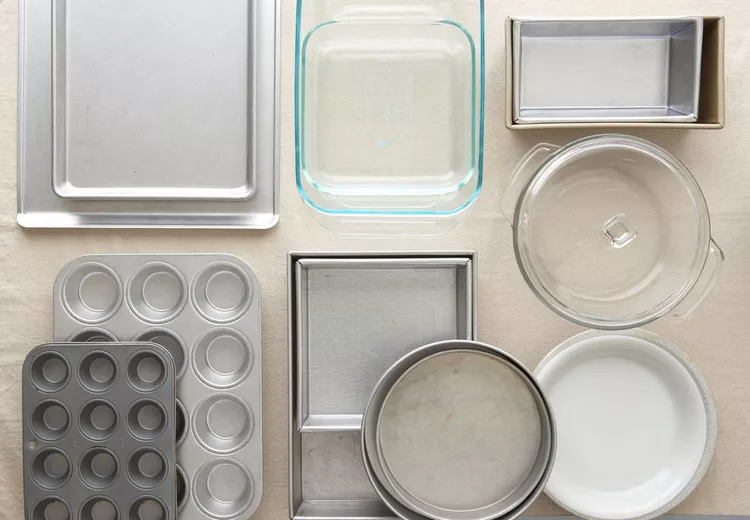
Of course, the cookware market is diversified, in addition to aluminum baking pans, like stainless steel, ceramic coated pots and pans also occupy a small market share. We need to consider a variety of factors when choosing pots and pans, including price, material, durability and so on. Since aluminum baking pans have the largest market share and are found in almost all kitchens, today we will mainly talk about aluminum pans, their advantages and disadvantages, different materials and types and precautions for use.
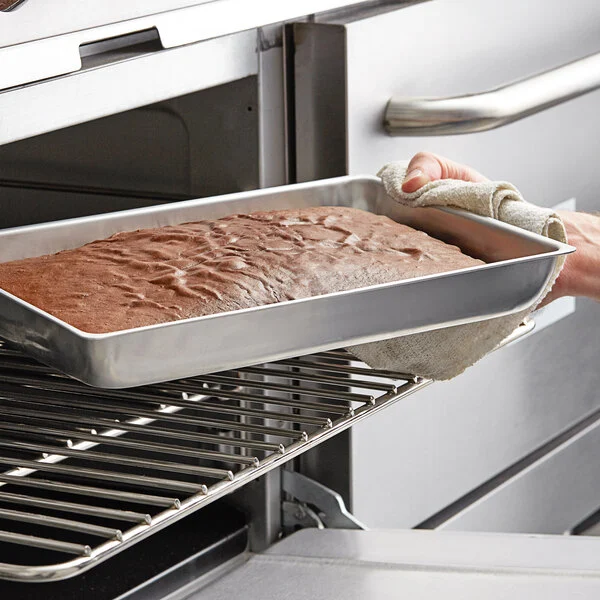
What are the pros and cons of aluminum cookware?
Aluminum cookware, including aluminum baking pans, has been a popular choice in kitchens around the world. But you may be hesitant to choose aluminum cookware. So we will delve into the pros and cons of aluminum baking pans, shedding light on their advantages and potential drawbacks in this part.
Pros of aluminum baking pans:
1. Excellent Heat Conductivity: One of the significant advantages of aluminum baking pans material is the exceptional heat conductivity. Aluminum is an excellent heat conductor, allowing for quick and even distribution of heat throughout the pan. This feature ensures that your baked goods are evenly cooked, with consistent browning and texture, resulting in delicious and visually appealing creations.
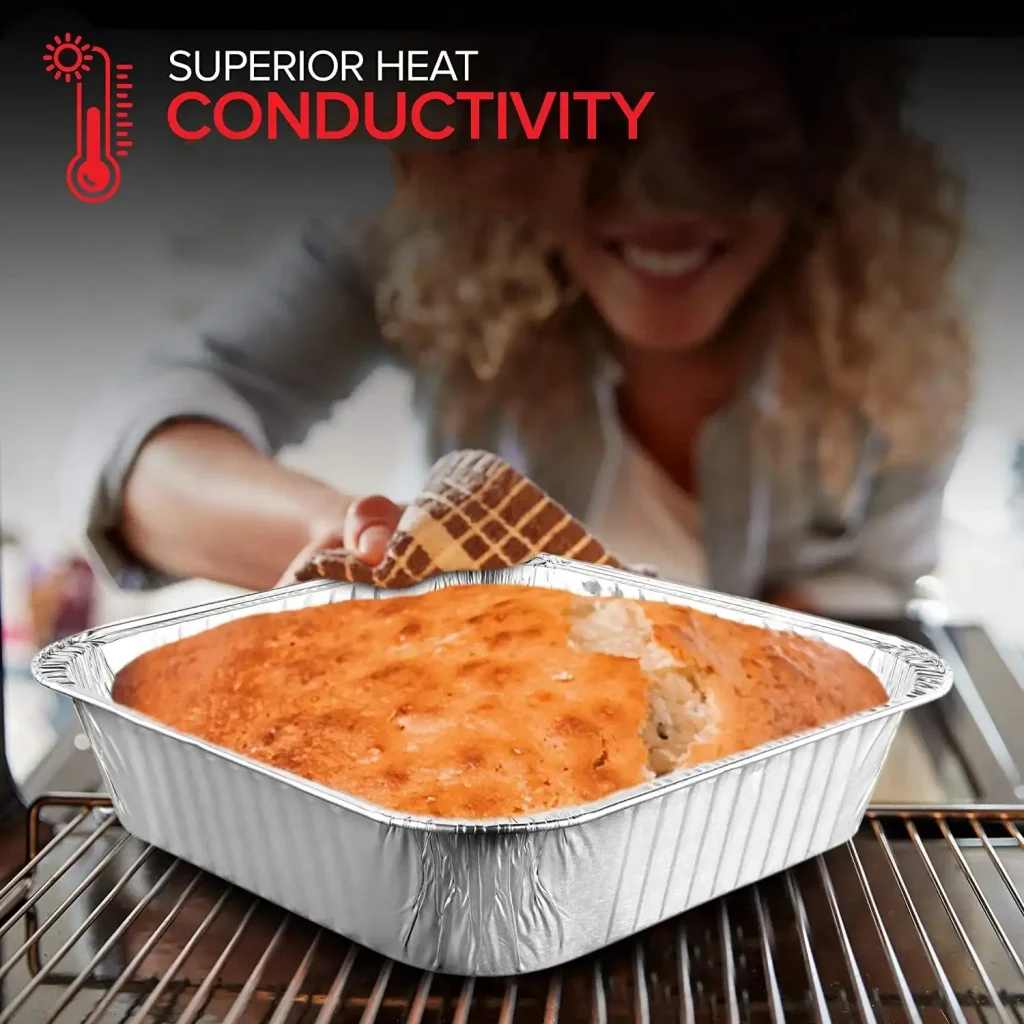
2. Lightweight and Easy Handling: Aluminum baking pans are lightweight, making them easy to handle and maneuver in the kitchen. Their lightness enables effortless transportation of baked goods, from the oven to the countertop or serving area. This convenience is particularly beneficial when dealing with large or heavy batches of baked goods.
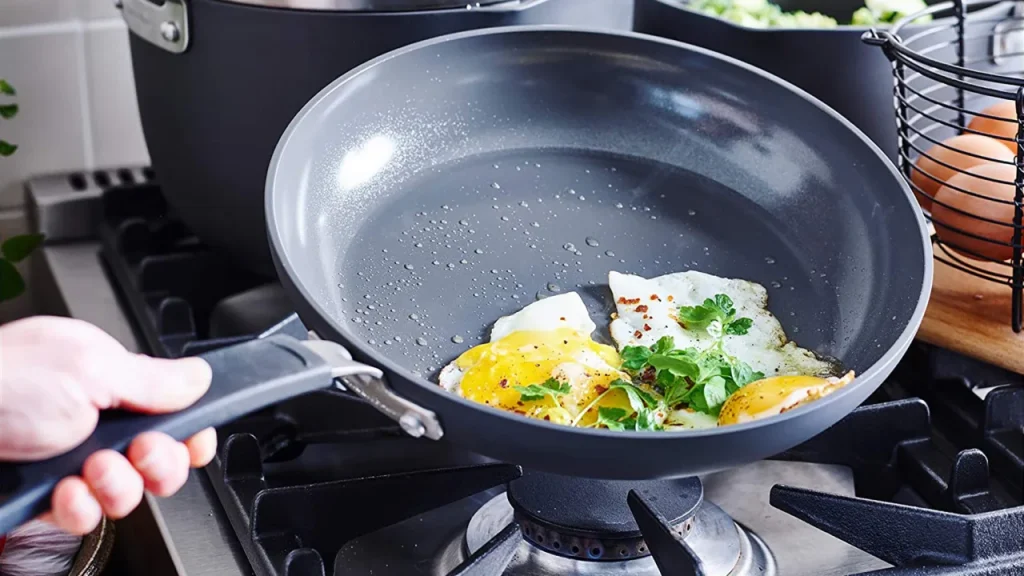
3. Affordable and Cost-Effective: Compared to other materials used in baking pans, such as stainless steel or copper, aluminum pans are generally more affordable. They provide a cost-effective option for home bakers or professional chefs who require a versatile and reliable baking tool without breaking the bank.
4. Quick Heating and Cooling: Aluminum baking pans heat up rapidly, reducing preheating time and allowing you to start baking sooner. Additionally, they cool down quickly once removed from the oven, enabling quicker cleaning and reducing the risk of accidental burns during handling.
Cons of aluminum baking pans:
1. Reactivity with Acidic and Alkaline Foods: One of the primary concerns with aluminum baking pans is their reactivity with acidic or alkaline ingredients. When exposed to such foods, aluminum can react, resulting in a metallic taste and discoloration. To mitigate this issue, it is recommended to line the pan with parchment paper or use silicone baking mats as a protective barrier.
2. Potential for Uneven Heating: While aluminum conducts heat well, its thinness and lightweight nature can sometimes lead to uneven heating. This issue can occur if the pan is not adequately thick or if the oven temperature is not properly regulated. To ensure even baking, it is advisable to monitor the oven temperature and rotate the pans if necessary.
3. Durability and Longevity: Aluminum baking pans may not be as durable or long-lasting as pans made from materials like stainless steel or cast iron. They are prone to denting, warping, and scratching, especially with rough handling or exposure to high temperatures. However, choosing high-quality aluminum pans or those with reinforced coatings can help enhance their durability.
Aluminum baking pans offer several advantages, including excellent heat conductivity, lightweight design, affordability, and quick heating and cooling. However, their reactivity with acidic or alkaline foods and potential for uneven heating should be considered. By understanding these pros and cons, you can make an informed decision when choosing aluminum baking pans for your culinary endeavors.
Types of Aluminum baking pans
In order to avoid the disadvantages of aluminum baking pans, manufacturers have further processed aluminum pans to address such as uneven heat conduction, can be corroded by acids and alkalis, and are prone to wear and tear. Before you choose aluminum baking pans, you need to know that aluminum pans are divided into several types so that you can choose the most suitable cookware for yourself:
- Aluminum baking pans: Aluminum baking pans are made by 1050 or 1060 alloying aluminum with other metals such as copper and stainless steel. High-quality aluminum pots may also use 3xxx series aluminum discs as materials. This type of cookware usually has good heat conductivity and lightweight, as well as corrosion and wear resistance. Aluminum pans provide even heating during cooking and are suitable for common cooking tasks such as stir-frying and braising.
- Aluminum non-stick pans: Aluminum non-stick pans are cookware with a non-stick coating applied to the surface of the aluminum pan. This coating is usually made of ceramic or polytetrafluoroethylene (PTFE) materials, making it less likely for food to stick to the bottom of the pan. Aluminum non-stick pans are easy to clean and are suitable for low-temperature cooking such as sautéing and cooking soups, but they need to be used carefully to avoid using them at high temperatures or scraping them with metal tools to avoid damaging the coating.
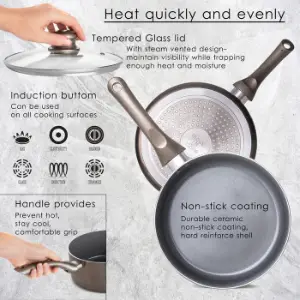
- Hard anodized aluminum baking pans: Hard anodized aluminum baking pans are resistant to abrasion and corrosion, and the surface is oxidized to form a hard outer layer. This makes the cookware more durable and provides a non-stick surface without the need for coatings. Hard anodized aluminum baking pans are suitable for a variety of cooking tasks, including high temperature cooking.
- Cast aluminum pans: Cast aluminum pans are formed by melting aluminum and pouring it into a mold. This type of cookware typically has a thicker bottom and uniform heating properties that maintain the temperature of the food and provide even heating. Cast aluminum baking pans are durable and suitable for a variety of cooking styles, including braising, sautéing and oven cooking.
It is important to note that due to the nature of aluminum, prolonged cooking at high temperatures and contact with acidic foods may cause aluminum to dissolve in the food. Therefore, it is best to avoid prolonged high-temperature cooking and the use of acidic foods during cooking, especially when using uncoated aluminum baking pans. If there are concerns, choose coated aluminum baking pans or cookware made of other materials.
Tips for maintaining aluminum baking pans
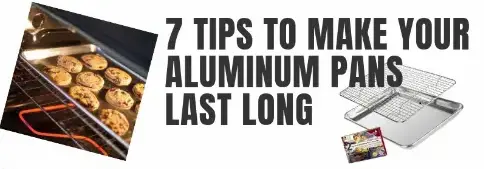
- Gentle cleaning: Use a mild detergent and a soft sponge or cloth to clean pots and pans, avoiding harsh detergents or hard brushes. For stainless steel and aluminum cookware, clean with a mild detergent and a soft brush. For cast iron cookware, avoid soap and use hot water and a brush to gently scrub.
- Avoid metal scraping: Avoid using metal spatulas or metal utensils to stir or scrape inside cookware to prevent scratching the bottom of the pan. Choose to use wooden or plastic tools to avoid damaging the coating of the cookware.
- Seasonal care for cast iron cookware: Cast iron cookware requires seasonal care to maintain its coating and rust resistance. Before use, you can apply a layer of cooking oil to the bottom of the pan and wipe it clean with a paper towel. This will protect the cookware and prevent rust.
- Avoid high temperatures and overheating: avoid heating empty pots and pans on a hot stove flame to avoid damaging the cookware. Make sure there is enough food or liquid in the cookware to help evenly distribute heat and prevent overheating.
- Store dry: Make sure cookware is completely dry before storing. Wet cookware tends to rust or harbor bacteria. Place a paper towel or desiccant inside the cookware to absorb moisture before storing.
- Prevent alkaline foods from corroding: Avoid storing alkaline foods (such as ketchup) in aluminum cookware for long periods of time to prevent corrosion and discoloration. If you need to store such foods, it is best to use stainless steel or other non-reactive materials.
- Use pots and pans evenly: Try to avoid using the same pots and pans frequently for the same cooking tasks to prevent the bottom of the pots and pans from warping or wearing out. Rotating the use of different pots and pans can extend their life.
By following these maintenance tips, you can protect and extend the life of your cookware while ensuring the quality and taste of the food you cook. The specific maintenance needs of each cookware may vary, so it is best to follow the material of the cookware and the manufacturer’s recommendations.
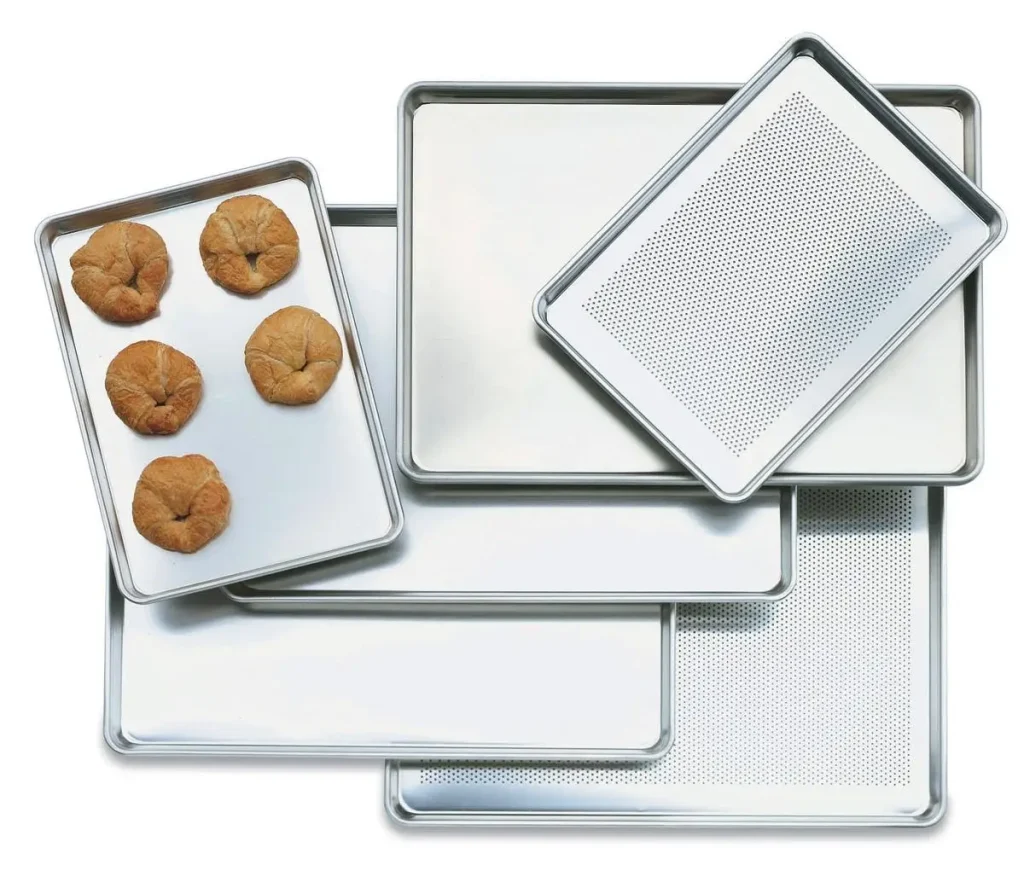
Recyclability of aluminum baking pans
In addition to their functional benefits, aluminum baking pans also offer environmental advantages, as they can be recycled, making them a sustainable choice for baking enthusiasts.
The environmental benefits of aluminum: Aluminum is a highly sustainable material with a low environmental impact. It is abundant in the Earth’s crust and can be extracted without causing significant harm to the environment. Compared to other materials, aluminum production requires less energy, reducing greenhouse gas emissions. Choosing aluminum baking pans contributes to the conservation of natural resources and helps combat climate change.
The recyclability of aluminum baking pans: One of the key advantages of aluminum baking pans is their recyclability. Aluminum has the unique property of being infinitely recyclable without losing its quality. When aluminum baking pans reach the end of their useful life, they can be easily recycled through municipal recycling programs or scrap metal facilities. Recycled aluminum requires only a fraction of the energy needed for primary aluminum production, further reducing carbon emissions.
The recycling process: The recycling process for aluminum baking pans involves several steps. First, the used pans are collected and sorted at recycling facilities. They are then cleaned to remove any food residue or contaminants. The cleaned pans are shredded into small pieces and melted in a furnace. The molten aluminum is then cast into ingots or rolled into sheets, ready to be used for manufacturing new aluminum products, including baking pans. This closed-loop recycling system significantly reduces waste and conserves resources.
Promoting a circular economy: By choosing aluminum baking pans and recycling them at the end of their life cycle, individuals can contribute to the development of a circular economy. In a circular economy, resources are used efficiently, waste is minimized, and products are designed for long-term use and recyclability. Recycling aluminum baking pans helps create a sustainable supply of raw materials for future production, reducing the need for virgin aluminum extraction.
Tips for recycling aluminum baking pans: To ensure the successful recycling of aluminum baking pans, it is essential to follow a few guidelines. Firstly, remove any food residue or liners before recycling. Check the local recycling guidelines to determine if the pans can be recycled through curbside collection or if they need to be taken to a recycling center. If recycling facilities are not available locally, consider donating the pans to charitable organizations, schools, or community centers that might be able to reuse them.
Aluminum baking pans offer unique advantages for baking enthusiasts, including excellent heat conductivity, lightweight design, affordability, and quick heating and cooling. By choosing aluminum baking pans and recycling them at the end of their life, we can reduce waste, conserve resources, and promote a circular economy for a greener future. By understanding the qualities and characteristics of aluminum baking pans, individuals can make informed decisions when selecting cookware for their baking needs. To weigh the pros and cons while adhering to recipe guidelines to achieve optimal baking results.
